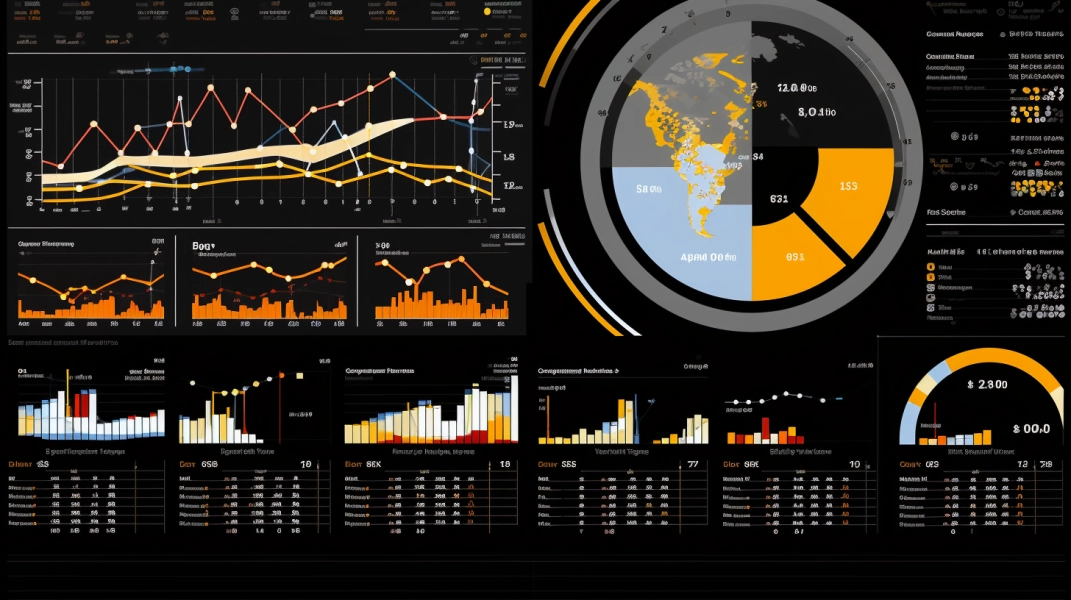In the age of digital transformation, data is the new oil. Analyzing this data and turning it into useful insights is vital for the growth of businesses. This is where business intelligence (BI) tools come in. Power BI has emerged as a strong force in this sphere and is quickly becoming a game-changer. With a host of features that trump traditional reporting methods, businesses are rapidly turning to Power BI consulting companies to harness the power of dynamic data visualization.
The Era of Traditional Reporting
Traditional reporting has its roots set deep within business structures. It generally involves manual data collection and processing, presenting raw data through tabular reports, charts, or graphs. However, these methods lack interactivity and their isolated data presentation often leaves room for misinterpretation. As John Tukey, a renowned American mathematician, aptly said, “The greatest value of a picture is when it forces us to notice what we never expected to see.” It is, therefore, crucial to upgrade from static data presentation to one that promotes meaningful insights.
Emergence of Power BI: A Revolutionary Shift
Enter Power BI, a BI tool developed by the technology giant Microsoft. It introduces a powerful way of visualizing, analyzing and sharing business data. With a highly intuitive user interface, it allows even non-technical users to create striking reports and dashboards with interactive data visualizations. Power BI has fostered an environment where data-driven decisions become the norm, not the exception.
Power BI vs Traditional Reporting: The Game Changer in Data Visualization
There are several significant ways Power BI outmatches traditional reporting methods:
- Interactive Visualization: Power BI empowers organizations by providing interactive visualizations with self-service business intelligence capabilities. In contrast to traditional reports, users can explore and conduct a dig-down analysis of the data, thereby extracting meaningful insights.
- Real-Time Data: Traditional reporting often suffers from lengthy delays, as data is gathered manually and processed. Power BI flaunts live data monitoring, giving you an up-to-date view of your business anytime, anywhere.
- Ease of Use: Power BI has a shorter learning curve than traditional BI tools. It’s as simple as dragging and dropping fields, measures, and formats to create reports.
- Integration Ease: Power BI seamlessly integrates with various data platforms, unlike conventional reporting tools.
“Without big data, you are blind and deaf and in the middle of a freeway.” rightly said Geoffrey Moore, an American organizational theorist. With Power BI, organizations no longer have to grapple with a lack of data visibility.
The Role of a Power BI Consulting Company
A Power BI consulting company can guide businesses through their data visualization journey, offering services from Power BI implementation to end-user training. They also aid in creating custom reports and dashboards, tailored to the unique needs of a business. In other words, they help decode the complexities of this dynamic tool.
Conclusion: Embrace the RevolutionAccording to Microsoft, by 2025, 75% of all enterprises will shift from piloting to operationalizing AI, driving a 5X increase in streaming data and analytics infrastructures. This underpins the necessity of power tools like Power BI moving forward.
In conclusion, Power BI’s ever-expanding features, coupled with improved decision-making capabilities are apt reasons to call it a game-changer in data visualization against traditional reporting. An investment with a Power BI consulting company not just promises streamlined operations, but also ensures that businesses stay relevant in the data-driven era of today.
As Edwina Dunn, CEO, Starcount once put it, “In God we trust. All others must bring data.” Power BI is a tool that presents this data, equally understandable and actionable, driving business growth and innovation. By integrating Power BI, businesses can transcend the conventional walls of data visualisation, and open up uncharted realms of insightful decision-making.
